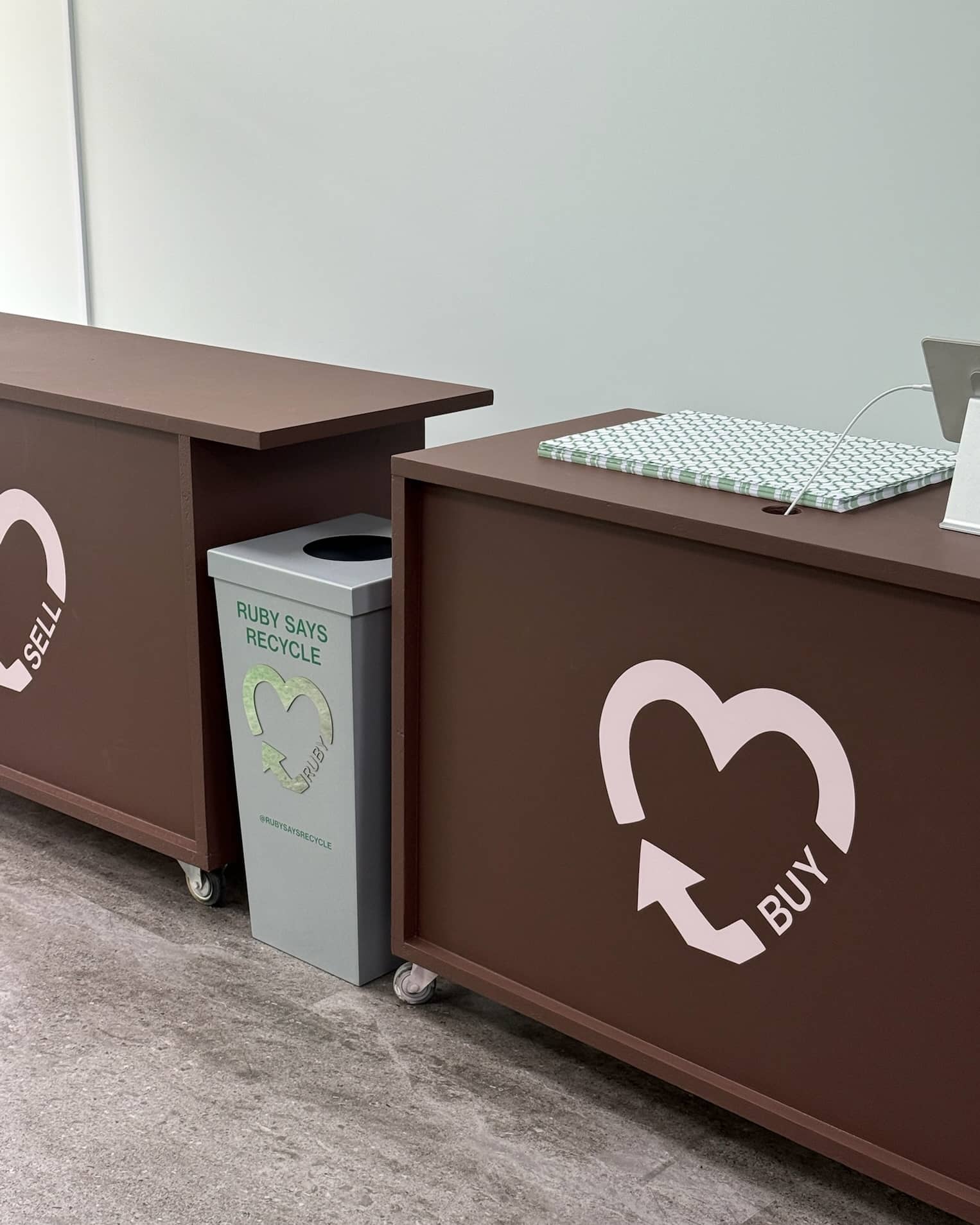
Want to keep your customers loyal? Tiered memberships can help. They work by offering levels of perks based on spending or engagement, motivating customers to stay with your brand. Here's why they matter:
- Higher ROI: Tiered programmes deliver 80% better returns compared to traditional loyalty schemes.
- Customer Motivation: 85% of shoppers say loyalty programmes influence where they shop.
- Proven Results: Brands like Manuka Doctor saw a 53% increase in repeat purchases after launching loyalty programmes.
- Local Fit: Tailored for Kiwi values like fairness and community, these programmes thrive in New Zealand’s competitive market.
How to create a tiered loyalty program that drives results
How Tiered Memberships Work on Customer Behaviour
Tiered memberships tap into basic human motivations to build emotional connections and encourage ongoing engagement that goes beyond simple discounts. Let’s break down how status, anticipation of rewards, and local values shape customer behaviour.
Status and Exclusivity Drive Customer Action
People naturally crave recognition, and tiered memberships transform loyalty into a badge of honour. Climbing to a higher tier feels like a genuine achievement. Take Sephora's Beauty Insider programme, for example. Its three-tier system offers progressively better perks, such as early access to product launches and exclusive events. FARFETCH takes it a step further with its Private Client tier, reserved for customers spending over NZ$15,000 annually. This elite group enjoys personalised services like a fashion concierge and personal stylist, creating a VIP experience that’s hard to resist.
Research backs this up: 37% of customers are willing to pay for an upgraded tier[2]. Once someone reaches a higher status, they’re more motivated to maintain it, often driven by the fear of losing their hard-earned perks[4].
"Tiered loyalty programs aren't just about discounts and rewards; they're the monogamy of the customer relationship. They're a commitment to keeping your customers happy, engaged, and never feeling the need to wander." – Alexis Priddy, CEO of YellowWebMonkey[3]
Reward Expectations Keep Customers Engaged
Tiered programmes create a cycle of excitement and fulfilment that keeps members coming back. When customers see tangible benefits at the next tier, it encourages them to continue engaging with the brand. For instance, Starbucks uses visual progress trackers to show members how close they are to the next level. This strategy works - 74% of customers interact more with brands when higher status levels are within reach, and higher-tier members spend 2.1 times more than standard loyal customers[5][6].
Social comparison also plays a role. Nike’s loyalty programme, for example, uses this to inspire members to aim for higher tiers. Add the fear of missing out (FOMO) - a factor influencing 60% of purchase decisions[5] - and you’ve got a recipe for sustained engagement.
How This Fits New Zealand Values
New Zealand’s focus on fairness and equal opportunity makes tiered membership programmes especially appealing when designed thoughtfully. Programmes that offer multiple ways to progress - whether through purchases, referrals, social media activity, or product reviews - create a sense of inclusivity. Transparency about how tiers work is key to building trust and encouraging participation[1].
Exclusive communities also strengthen loyalty. Successful programmes in New Zealand focus on rewards that reflect local lifestyles and are priced in NZD. By combining the psychological appeal of status with practical, meaningful rewards, these programmes deliver real value to customers.
What Makes a Good Tiered Membership Program
A successful tiered membership programme is built on three key elements: setting realistic and motivating tier levels, designing rewards that matter, and ensuring the programme connects with local customers. When these elements are well-executed, the programme can genuinely engage customers, rather than becoming just another loyalty scheme that gets overlooked. Let’s dive into how to craft tier levels, structure rewards, and make benefits resonate with New Zealand customers.
How to Set Tier Levels
The backbone of any tiered membership programme is creating levels that strike a balance between being attainable and inspiring. For New Zealand customers, this means setting thresholds that align with typical spending habits while motivating members to aim higher. Start by analysing historical purchase data to understand annual spending patterns, and create a structure - like Bronze, Silver, and Gold - that allows customers to see a clear path to advancement.
It’s also important to consider regional spending differences within New Zealand. The entry-level tier should feel accessible to most, while higher tiers should remain aspirational without feeling out of reach. For example, ALDO Group’s programme uses spending targets that customers must meet within a specific timeframe to maintain their tier status, offering a clear incentive to stay engaged[1].
How to Structure Rewards for Each Tier
Once tier levels are in place, the next step is to create a reward structure that motivates customers to climb the ladder. A good approach is the 80:20 rule - reserving around 80% of the most exclusive benefits for the top 20% of members[7]. Each tier should offer rewards that grow in value and exclusivity as customers progress.
For instance, the base tier might include practical perks like free shipping or early sale access. The middle tier could add more personalised rewards, such as birthday gifts, exclusive products, or priority customer service. The top tier should deliver premium experiences - think personal styling sessions, VIP events, or access to limited-edition items. The key is to make sure each tier feels distinct while maintaining consistency with popular rewards across all levels.
MSI Rewards is a great example of a programme that uses a point-based system to encourage repeat purchases and customer engagement[1]. Simplicity is crucial - keep the rules straightforward and focus on rewards that drive profitable behaviours[8][10].
Making Rewards Relevant for New Zealand Customers
To truly connect with Kiwi customers, your programme needs to reflect local values and preferences. New Zealanders often prioritise sustainability and community support, so consider incorporating social benefits like earning points for referring friends or donating to local charities. A standout example is One NZ’s One Good Kiwi initiative, which distributes NZ$100,000 each month to charities chosen by customer votes[9].
Personalisation is another key factor. By analysing purchase history and customer preferences, you can tailor rewards to individual interests. For instance, if someone frequently buys outdoor gear, offering early access to hiking equipment or invitations to outdoor events will feel far more relevant than generic discounts. Air New Zealand’s Airpoints programme does this well by integrating gamification and rewards that align with Kiwi lifestyles[9].
Seasonal and cultural relevance also matters. Aligning rewards with New Zealand’s seasons or events - such as offering early access to winter gear or promotions during Matariki - can boost engagement throughout the year. Finally, ensure the programme is easy to use by integrating mobile technology, catering to New Zealand’s mobile-first audience[9].
Setting Up Tiered Memberships on Shopify

Creating tiered memberships on Shopify can be straightforward with the right tools and a touch of automation. With a well-structured system, you can manage customer tiers, deliver rewards, and keep your Kiwi customers engaged - all while ensuring compliance with New Zealand regulations. Here’s how you can make it work.
Automating Tiers with Shopify Tools
Shopify’s built-in features make it easy to automate tiered memberships without relying on overly complex third-party platforms. The magic lies in combining customer segments with Shopify Flow to automatically assign tiers based on lifetime spending.
Start by defining customer segments for each membership tier. These segments act as the foundation for your automation, enabling you to assign discounts and trigger specific actions tailored to each tier. For instance, a common three-tier system might look like this:
- Bronze: Spend NZ$100 or more, receive a 5% discount.
- Silver: Spend NZ$250 or more, enjoy a 10% discount.
- Gold: Spend NZ$500 or more, unlock a 15% discount.
Shopify Flow takes care of the heavy lifting. It can automatically enrol customers into tiers as they hit spending milestones, send personalised welcome emails when they move to a new tier, and adjust their status if spending changes. To avoid sending duplicate notifications, you can use tags or metafields to track communications.
Here’s a tip from Paul_N, Flow Product Manager at Shopify:
"Use segments instead. Once you create a segment for each tier, you can use it in automations (Segment joined / Segment left), and you can use it in the Admin for filtering/etc." [11]
If you need more advanced features, apps like Bold Memberships can expand your options. For example, Bold Memberships offers pricing plans ranging from NZ$9.99/month for 1–50 members to NZ$199.99/month for 1,001–5,000 members, with an additional 1% transaction fee [12]. This app can help you manage memberships efficiently while boosting retention.
Before launching your programme, ensure it complies with New Zealand’s legal requirements.
Staying Compliant with New Zealand Consumer Laws
Adhering to NZ consumer protection laws is essential to protect your business and build trust with your customers. The Consumer Guarantees Act (CGA) ensures that customers’ rights to refunds, repairs, or replacements are not overridden by membership terms.
Minna Boyle, Head of People & Culture at Sprintlaw, emphasises the importance of compliance:
"As a business providing goods or services, it is crucial to understand and comply with the consumer guarantees mandated by the CGA." [13]
Your programme’s Terms and Conditions should clearly outline eligibility criteria, point accrual processes, tier advancement rules, and refund policies. Additionally, a Privacy Policy that aligns with the Privacy Act 2020 is non-negotiable. This policy should explain what personal data is collected and how it will be used. Regularly reviewing your programme can help you stay compliant, especially since the Commerce Commission actively monitors businesses to ensure consumer guarantees are upheld.
Sapna Goundan from Sprintlaw adds:
"Loyalty programmes offer a strategic way for businesses to retain customers." [14]
Once compliance is covered, focus on localising your programme for New Zealand customers.
Tailoring NZD Pricing and Local Payments
To create a seamless experience for New Zealand shoppers, it’s crucial to localise your financial settings. Configure Shopify to display prices in NZD and integrate trusted local payment options like Paymark, EFTPOS, and POLi Payments, alongside global payment methods. Clear communication about tier requirements and reward values will help manage customer expectations.
When setting tier thresholds, consider local spending habits. For example, if your average customer spends around NZ$200 annually, setting your entry tier at NZ$150 may feel more achievable than NZ$500. Aligning these thresholds with typical spending behaviours encourages more customers to participate in your rewards programme.
A great example comes from Kure NZ – Wellness & Skincare, which implemented the Bold Memberships app in mid-2024. Over four months, they successfully managed membership fees and praised the app’s responsive support team, even though they encountered some technical hiccups. This shows how New Zealand businesses can effectively use these tools with the right support system in place.
sbb-itb-f46a14b
Tracking and Improving Tiered Membership Results
To make your tiered membership programme thrive, it’s essential to keep a close eye on the right metrics. Tracking these numbers not only helps you measure success but also gives you the insights needed to adjust your strategy for better retention and revenue growth.
What Numbers to Track
Start by focusing on key metrics like retention rate, average order value, customer lifetime value (CLTV), redemption rate, and participation levels. For instance, effective programmes have been shown to increase purchase frequency by up to 27% and encourage loyalty members to spend 40% more per order [16]. Comparing predictive CLTV before and after launching your programme can reveal its direct impact. A well-designed programme often achieves a redemption rate of about 20% within six months [15].
Participation metrics are equally important. Look at enrolment rates, how quickly members accumulate points, and how often they convert those points into rewards. These figures provide a window into customer engagement. Mature programmes, when executed well, can generate impressive returns, with ROIs ranging from 200% to 400% within six to twelve months [16].
Once you’ve gathered this data, use it to fine-tune your tier structure and make it even more enticing.
Using Customer Data to Improve Tiers
Customer data is a goldmine for understanding what drives member loyalty. Analysing this data can uncover trends in preferences, engagement, and even potential pain points. Organisations that prioritise customer retention are 60% more profitable than those that focus solely on acquiring new customers [17].
To dig deeper, segment your members using tools like dynamic tags. This approach helps identify key behaviours and patterns. A great example is the Federation of Karnataka Chambers of Commerce & Industry (FKCCI), which doubled its annual membership growth - from 300 to 700 members - by centralising its data [17]. Regular feedback through surveys and interviews can also provide actionable insights to refine your programme further.
Personalisation is another game-changer. Customising emails, newsletters, and other communications to match individual member profiles can significantly boost engagement [18]. Don’t overlook the customer effort score (CES) either. This metric tracks how easy it is for members to interact with your programme, and it’s critical - 61% of consumers say they’d switch to a competitor after just one bad experience [15].
For Shopify brands, tools like Almond Labs' Roadmap (https://almondlabs.studio) simplify this process. These integrated solutions offer built-in analytics and segmentation features that make it easier to turn data into actionable improvements.
Once you’ve nailed the basics, consider aligning your rewards with seasonal and cultural trends in New Zealand.
Matching Programmes to New Zealand Seasons and Events
Tying your programme to New Zealand’s unique seasons and cultural events can make it even more engaging. For example, the Kiwi summer (December to February) is a great time to offer travel-related rewards or discounts on outdoor gear. In winter, perks like free home delivery or cosy product bundles can resonate with customers. And don’t forget - Christmas in New Zealand falls during summer, which influences shopping habits and preferences.
Cultural relevance is just as important. Take a cue from Simpro, a field service management company operating in both Australia and New Zealand. They designed a customer retention campaign inspired by the concept of “smoko” - a well-known break tradition - culminating in a food truck experience for field technician teams [19].
You can also plan tiered bonuses around major public holidays like Waitangi Day, ANZAC Day, Queen’s Birthday, and Labour Day. Other opportunities include back-to-school periods and big sporting events, such as Rugby World Cup matches or All Blacks games. By monitoring engagement with detailed analytics and customisable dashboards, you’ll be able to adjust these seasonal campaigns to better connect with Kiwi lifestyles and values [17].
Conclusion: Using Tiered Memberships to Keep More Customers
Tiered membership programmes are a powerful way for Shopify brands to build stronger, longer-lasting relationships with their customers. In fact, businesses with tiered loyalty programmes see a 1.8x higher return on investment compared to those without them [20].
For New Zealand brands, the potential is even greater. With 97% of Kiwis already participating in retail loyalty programmes [22], it's clear that customers here value such systems. But to succeed, businesses need to cater to local preferences. Kiwi shoppers tend to favour instant rewards over long-term point accumulation, and they expect digital convenience to be part of the experience [22].
"You don't earn loyalty in a day. You earn loyalty day-by-day." – Jeffrey Gitomer, Professional speaker on customer loyalty [21]
The secret to an effective tiered programme lies in understanding what motivates people: the desire for status, recognition, and exclusive benefits. When combined with clear reward pathways and meaningful perks, these elements encourage not just loyalty but also increased spending.
Tools like Almond Labs' Roadmap (https://almondlabs.studio) make it easy to manage tiered memberships. They automate rewards, segment customers, and simplify tier management, allowing you to focus on creating experiences your customers will love.
The best programmes balance smart technology with a deep understanding of customer behaviour. For New Zealand businesses, this means tailoring rewards to seasonal spending habits and aligning with local values. By starting with a simple three-tier structure and refining it based on customer data and feedback, brands can boost retention, increase average order values, and achieve sustainable growth. Keep it simple, adapt as you go, and let data guide your way to lasting customer loyalty.
FAQs
How can businesses create tiered membership programmes that resonate with New Zealand customers?
Designing Tiered Membership Programmes for New Zealand Customers
When creating tiered membership programmes for Kiwi customers, it's crucial to prioritise clarity, fairness, and local appeal. New Zealanders appreciate straightforward communication about what they’re signing up for - membership benefits, costs, and terms should be easy to understand. Hidden fees or overly complicated structures? That’s a fast way to lose trust. Keep it simple and transparent to encourage participation across all tiers.
To truly connect, think about rewards that reflect the heart of New Zealand. Offer perks like locally made products, experiences that showcase Aotearoa’s stunning landscapes, or discounts tied to initiatives that promote sustainability. These touches not only align with local values but also strengthen loyalty. Celebrating the diversity within New Zealand’s communities can further enhance the bond between your brand and its members.
By weaving these elements into your programme, you’ll create a membership experience that feels relevant, trustworthy, and uniquely Kiwi.
How can tiered membership programmes keep customers engaged and motivated?
To keep customers interested and motivated in a tiered membership programme, focus on crafting personalised experiences that genuinely make them feel appreciated. Celebrate their milestones, offer exclusive perks, and acknowledge their loyalty as they move up the tiers. These thoughtful touches can go a long way in strengthening customer retention.
Providing rewards that resonate with your customers' preferences is just as important. Incentives that match their shopping habits or lifestyle - like early access to new products or one-of-a-kind experiences - can encourage them to aim for higher tiers while fostering a stronger bond with your brand.
For Shopify brands, tools like Almond Labs' solutions can make it easier to design and manage effective tiered programmes, helping you grow your customer base and loyalty without unnecessary hassle.
What metrics should businesses track to measure the success of their tiered membership programmes?
Measuring the Success of Tiered Membership Programmes
To understand how well your tiered membership programme is performing, it’s important to keep an eye on a few critical metrics:
-
Customer Retention Rate: This metric reveals the percentage of customers who continue to participate in the programme over time. It’s a great indicator of how effective your programme is at keeping members engaged for the long haul.
-
Churn Rate: On the flip side, tracking how many customers drop out of the programme during a set period can help pinpoint areas that need attention or improvement.
-
Customer Lifetime Value (CLV): This measures the total revenue a customer brings in throughout their relationship with your brand. It’s a solid way to assess the overall impact of your membership programme on your bottom line.
-
Programme Engagement: How often members take advantage of rewards or benefits tells you a lot about the programme’s appeal. High engagement often signals that the rewards are hitting the mark.
By consistently reviewing these metrics, Shopify brands can fine-tune their tiered membership strategies to build stronger customer loyalty. For businesses in New Zealand looking to simplify this process, tools like Almond Labs can be a valuable resource to drive e-commerce growth.
Heading 1
Heading 2
Heading 3
Heading 4
Heading 5
Heading 6
Lorem ipsum dolor sit amet, consectetur adipiscing elit, sed do eiusmod tempor incididunt ut labore et dolore magna aliqua. Ut enim ad minim veniam, quis nostrud exercitation ullamco laboris nisi ut aliquip ex ea commodo consequat. Duis aute irure dolor in reprehenderit in voluptate velit esse cillum dolore eu fugiat nulla pariatur.
Block quote
Ordered list
- Item 1
- Item 2
- Item 3
Unordered list
- Item A
- Item B
- Item C
Bold text
Emphasis
Superscript
Subscript




